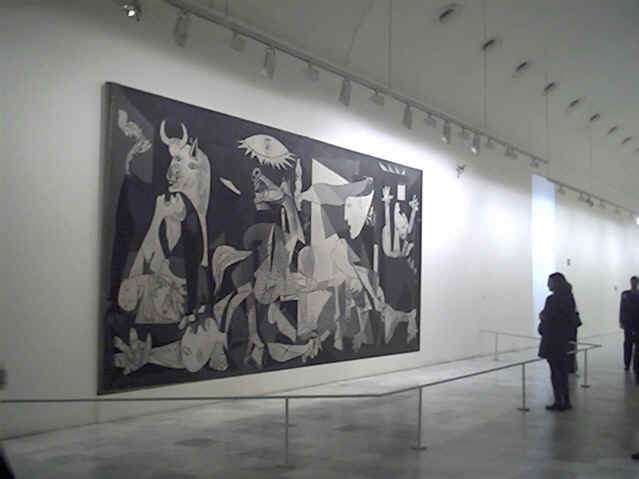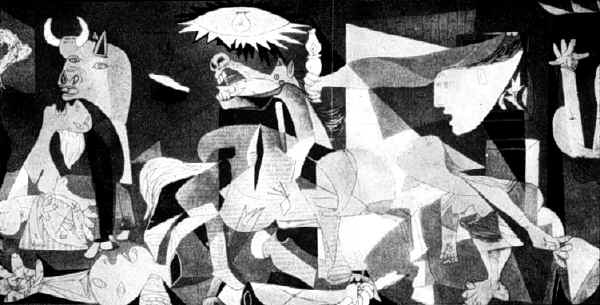
Picasso's Guernica Painting

The highlight of the
museum is Picasso’s emblematic painting, Guernica (349.3 x 776.6 cm)
regarded as the most famous single work of the 20th Century. This
enormous work was painted in just over a month as a mural for the Spanish
Pavilion at the World Fair in Paris in 1937.
Picasso, already a highly regarded and successful artist living in Paris,
had been commissioned by the Spanish Republican government to complete a mural
for the pavilion.
As Picasso mused
about what to paint, the devastating news of the bombing of a Basque village in
Spain reached the world. A German
Condor Legion flying for the Nationalist forces under Franco conducted an
unprovoked prolonged attack on Gernika-Lumo, a small but significant Basque
village. This took place in the
early afternoon of a busy market day, Monday April 26 1937, and was Europe’s
first air raid on civilians.
Picasso
chose this catastrophic event as the subject of his commission.
There
have been many interpretations of the painting; it has been suggested Picasso
chose to reflect on the suffering caused by war, rather than dwelling on the
political implications and in doing so he composed a work of enigmatic yet
powerful allusions. In the
‘hot-bed’ of international politics at the time it was reported that
the painting, Guernica, was met with derision or indifference.
However
the monumental work came to be seen as an anti-war painting and travelled to
many countries before the outbreak of World War II as a part of exhibitions of
contemporary artists and to raise funds for Spanish political refugees. Picasso’s own words from the time illustrate his deep
concern for the suffering of the Spanish people in such a destructive civil war
“Painting is not done to decorate apartments.
It is an instrument of war against brutality and darkness.”
After an exhibition
at the MoMA in 1941, Guernica remained in the custody of the MoMA,
awaiting Picasso’s wish that the painting go to Spain when his country returned to a
democratic government. In 1981 it
was ceremoniously returned to Spain at the end of Franco’s Dictatorship and
the Spanish Government issued a stamp commemorating this event, featuring the
painting. Unfortunately Picasso
died in 1973 so was not to witness this momentous occasion.
Temporarily Guernica
was
housed in an annex of Museo del Prado until the opening of the Reina Sofia in
1992 where it hangs today. There
has been strong support in some quarters, thus far unsuccessful, to transfer Guernica to
Bilbao, its ’rightful’ home!
